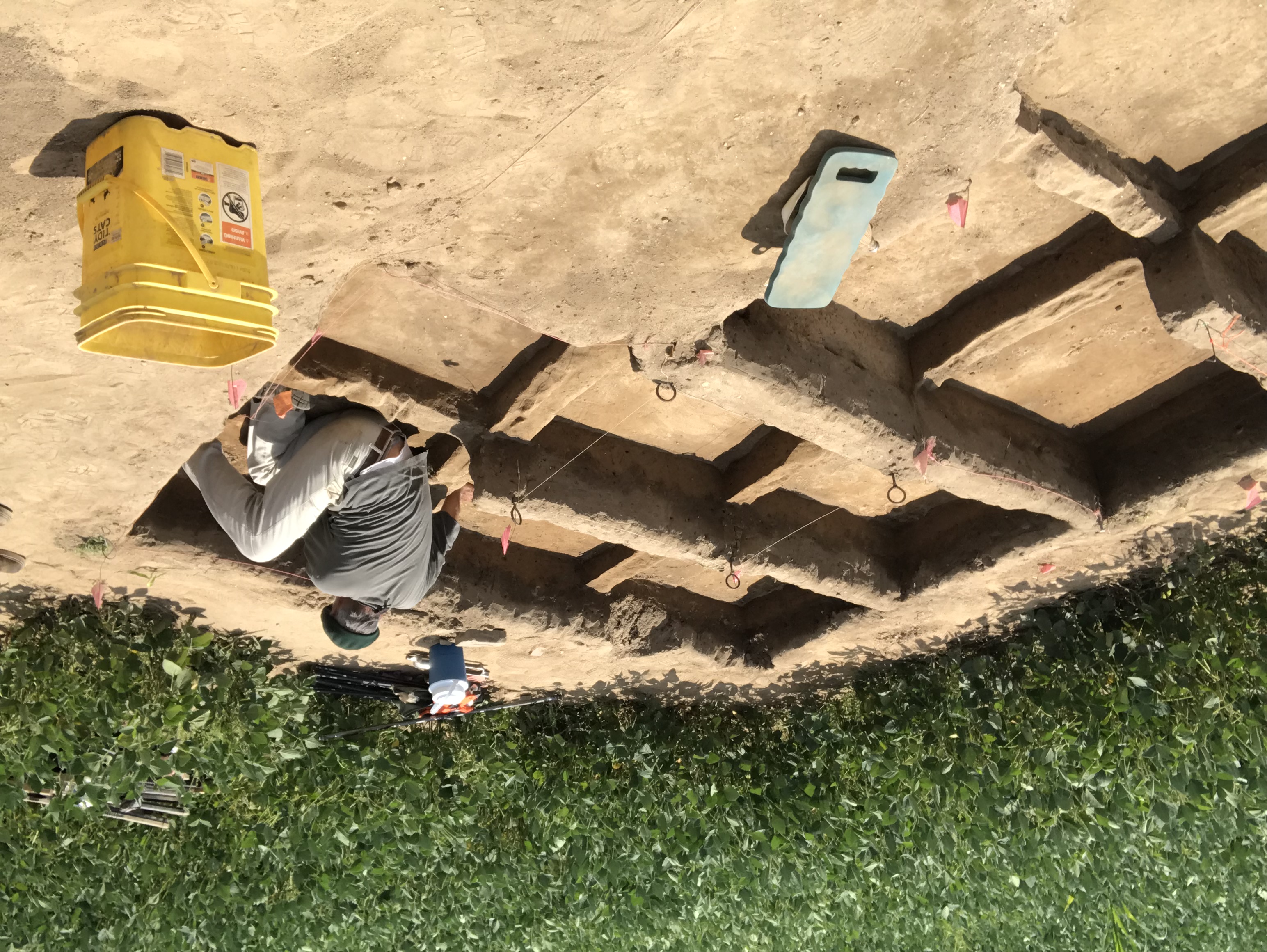A 13,000-Year-Old Camp Site Reveals Hunting Patterns from Ancient Humans
Posted on Categories Discover Magazine

Some 13,000 years ago, just as the last Ice Age was receding, ancient humans were returning to a camp in the Great Lakes region to process hunted animals and sharpen up their hunting weapons.
In present day, a local amateur archaeologist named Thomas Talbot discovered the ancient campsites when he kept finding Clovis tools and rock scrapings in a field near Mendon in southwestern Michigan. Brendan Nash, an archaeologist at the University of Michigan, and a team then started an excavation at what they call the Belson site, which lies near a river, for the following five years.
They described some of the tools they found on the surface in a 2021 study published in PaleoAmerica and in a study published in 2024 in PLOS ONE, the team dug and found two distinctive layers that were each only used once, likely in consecutive years. This kind of discovery is rare for Clovis technology, which usually has remains of many more visits and activities all jumbled together.
“We are very much dealing with the cigarette butts and broken beer bottles of the ancient world,” Nash says.
Clovis Culture and the Ancient Camp Sites
Archaeologists often talk about a Clovis culture, which includes ancient technology, but also language and belief systems. About 13,000 years ago, just as the Ice Age was receding, people across North America from Washington state to Texas and Florida — and now Michigan — adhered to a pretty strict tool manufacturing sequence to make Clovis points for several hundred years. The points were fluted and came in various sizes, often used on projectiles like spears.
At Belson, hunters arrived at the site for two very short periods. These two consecutive years are separated by a good degree of sedimentation — Nash says a flood likely covered up the remains of the first camp, setting a new ground level the following year.
This flood made it easy to see what the ancient people were doing in each year, even though the remains of both years show similar activity. The people who camped at the site were using tools to scrape out animal hides and resharpen spear points and tools.
“I think that it’s post hunt. They brought back a few legs and shoulders and they’re preparing the hides,” Nash says.
They may have done this around a campfire — Nash’s team found a campfire built in the first year. In the second year, people dug up the fire in the exact same place and lit it again. It’s unknown why they came back, but it shows the Clovis people had activity patterns.
“It really shows there is a strict organization to the camp site,” Nash says.
Read More: Pre-Clovis Projectiles Hint At Multiple Migrations
Hunting Massive and Small Mammals
Ancient people who used Clovis technology typically hunted massive prey, like mammoths and mastodons. But proteins Nash analyzed on the remains found at the camp in Michigan weren’t from the elephant family at all. Instead, there were proteins from a cervid — a mammal from the deer family. Given the post-glacial setting of the area 13,000 years ago, Nash believes that caribou were more likely prevalent than deer, but there is no evidence to be sure. The team also found proteins from peccary, rabbits, and muskoxen or sheep.
“What we’re seeing here is a broad-spectrum diet,” Nash says, adding that the smaller species like peccaries and rabbits are odd, since Clovis people are typically associated with hunting bigger prey.
Read More: Which Animals Did Early Humans Mainly Hunt?
An Ancient Culture That Influences Us Today
While the recent study only examined two years of the ancient camp site, Nash says he and his team have since deciphered six more stratified layers, meaning other people had kept coming back.
Other archaeological work has revealed that people came back to the general area to hunt for thousands of years, spanning several larger technological cultures that far outlasted Clovis technology.
“From the use of the landscape and the reuse of this hunting site through time, we can see cultural continuity,” Nash says.
Overall, Nash says that studies like this are important because all of humanity descended from people who lived this lifestyle. Whether North America, Africa, or Eurasia, people were following these types of seasonal hunting patterns everywhere in the late Pleistocene.
“It’s a way of life that’s foundational to humanity,” Nash says.
Read More: New Research Suggests Humans Arrived in the Americas Much Earlier Than Thought
Article Sources
Our writers at Discovermagazine.com use peer-reviewed studies and high-quality sources for our articles, and our editors review for scientific accuracy and editorial standards. Review the sources used below for this article: